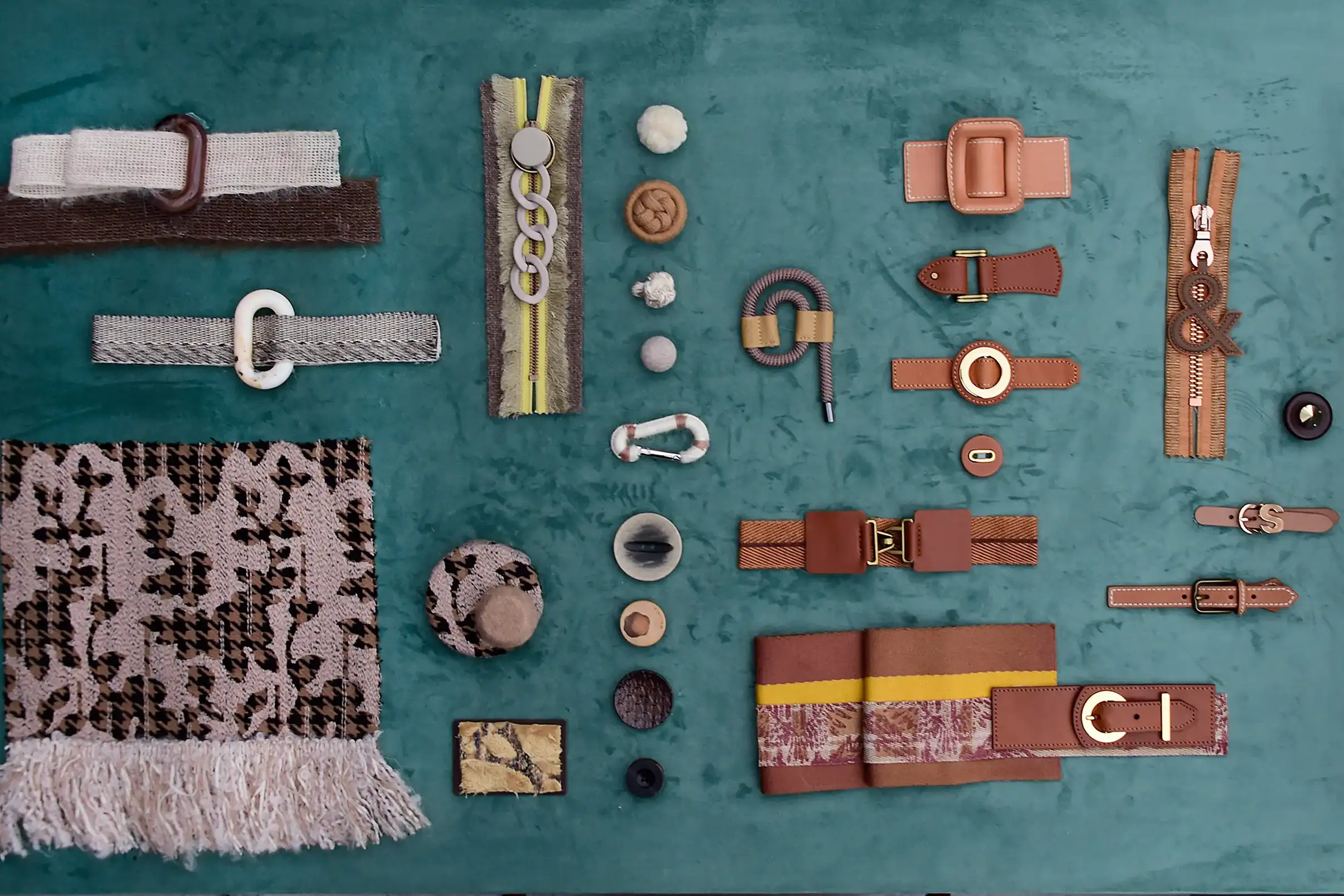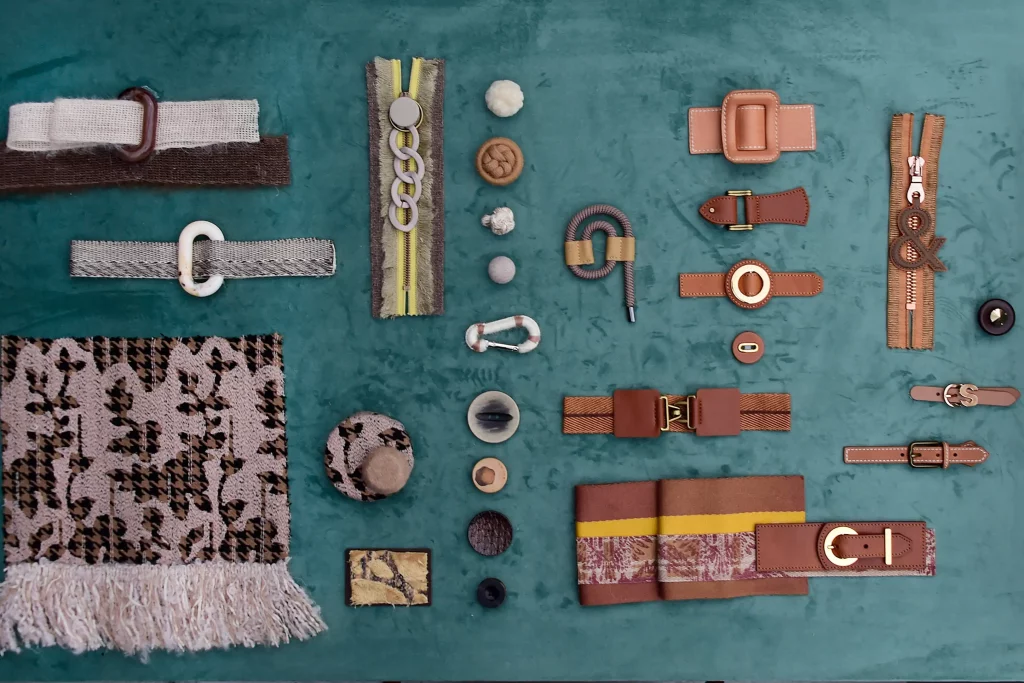Milano Unica’s upcoming event is scheduled to be held at Rho Fiera Milano on the 11th, 12th, and 13th of July. This edition will showcase the collections for Autumn/Winter 2024-25.
Milano Unica’s July 2023 Edition
In a departure from its usual venue, the next edition of Milano Unica will be held in pavilions 1-3 and 2-4, located near the Porta Est of Fiera Milano. This location offers easy accessibility for visitors arriving via the metro. The change in location is a result of ongoing renovations taking place in the Halls, which traditionally host the Salon.
Milano Unica’s 37th Edition: Embracing Sustainability and MU Community
For the 37th edition of Milano Unica, the stands will undergo a transformation, showing material that represents the texture of fabric through its contemporary geometry. This concept aims to create a unified atmosphere across all the stands, expressing the idea of the MU Community introduced on March 9th. The MU Community concept presented creative ideas for the Fall/Winter 2024-25 season and represents a step towards sustainable creativity. The use of pre-eased panels not only reduces waste but also allows for their reuse in future editions.
An immersive experience at Milano Unica 2023: the Metaverse
In the past, Milano Unica already focused on some technological advancements to develop the fair’s accessibility. E-MilanoUnica Connect, the B2B marketplace platform, was created in collaboration with Pitti Immagine, to increase the visibility of collections and foster international relations of companies. Also, an App was designed to simplfy visiting the fair.
For this 37th edition, Milano Unica will offer an immersive experience thanks to the Metaverse, a three dimensional space within which individuals will be able to move, share and interact through augmented reality. The project is made possible thanks to PwC Italia. The Milano Unica avatar will be the narrating voice of the 37th edition, guiding the visitors of the fair. The digital hub will be active over the three days of the fair.
The visitor will be able to enter into the rooms of the three MU Community themes for Fall-Winter 2024-2025. The three rooms will represent a journey inside the creative processes for the coming season. Entering the Night Community will be a plunge into an underground aesthetic. The Family Community will an intimate experience. Concluding the journey is the Culture Community, fostering innovation.
Fabrics will be the main characters of the journey. Their textures will seem to produce the musical track of the environments, engaging the visitors of the 37th edition.
Milano Unica, the Previous Edition: Natural versus synthetic fiber
Alessandro Barberis Canonico, President of Milano Unica, introduces: «The luxury sector has a long life cycle that brings an intrinsic sustainability element. Besides this, in Italy, the high quality and premium textile industry is related to natural fibers, such as wool and derivatives, cotton, linen, etc. Of course, exhibitors are also starting to use new fibers, mostly recycled ones, which are now perceived better than in the past when they were considered more ‘low level’ and not suitable for the premium clothing industry».
Textile producers and sustainability advocates have upheld the debate regarding natural versus synthetic fibers for a long time. It is no doubt that fibers made from plastics are not renewable resources and might break down into microplastics, making their way into nature, food chains, and water supplies.
However, that does not mean that natural fibers are entirely ethical either. Despite being a natural resource, for example, cotton is not a sustainable crop, needing massive amounts of water to farm and produce the fiber. Of course, organic cotton is a step in the right direction, but it still only makes up around one percent of global cotton production.
Sustainability: a matter of pollution, environment, and labor conditions
While there is no one strategy to ensure all materials used in garment production are sustainable and ethical, since each fiber presents its strengths and weaknesses in terms of cost, impact, and quality, there are some strategies Milano Unica is carrying out to help buyers and visitors make informed decisions about ethical verification for the final product.
As Barberis Canonico points out, sustainability is not only a matter of pollution and environment, it also concerns labor conditions. «At Milano Unica, we are not a certifying body, we cannot only select ‘sustainable’ companies. However, we dedicated a side area of the event, right at the entrance, with two main goals: promote companies following this type of path and demonstrate in a concrete way that sustainability values are no longer to be considered apart from those of creativity and style, but one and the same. To help buyers and visitors identify ethical textiles, at Milano Unica, we ideated booklets with scores that classify exhibitor companies over thirty parameters, according to their efforts toward sustainability, relying on what companies declare and on their certifications, such as OekoTex standards».
Milano Unica’s evaluation of companies: sampling and classification
The performance of samples and companies is shown through the classification of products and processes used, including whether or not there are hazardous chemicals present, the materials derived from organic agriculture or from responsibly managed forests, and many more. According to the report from past editions, the panorama is encouraging.
Of all the samples presented during the 2022 first edition in the Tendenze and Sustainability Area, ninety one percent are made using processes that comply with the main certifications, standards regarding the elimination of hazardous material. Forty six percent of the samples were made using recycled materials, and twenty two percent employed materials from organic farming.
Also, twenty two percent of the samples were made with traditional materials, guaranteeing a low environmental impact, eleven percent used cellulose-based materials derived from responsibly managed forests, six percent used fibers produced with closed-cycle processes, fifteen percent cruelty free animal and four percent bio-based chemical fibers.
Environmental awareness as a way to encourage innovation
This approach follows a precise philosophy, continues Barberis Canonico, which is to reward companies that invest in ethical approaches, knowing that, after a few years, others will follow: «We want to lead by giving a good example, still keeping a balance between aesthetics and sustainability. We consider environmental awareness not just an ethical issue, but as a way to encourage creativity and innovation. While it poses challenges and sets limits, it stimulates technological innovation». Moreover, it gives brands who cannot always apply a sustainable approach to the whole connection, an opportunity to create capsule collections with sustainable elements.
After positive results in the biennium 2017-2018, the textile and apparel market witnessed a collapse due to the pandemic. Customers did not consume, stores closed, and when they reopened, they were still full of stock. «As a trade show, we need to foster the market», states Barberis Canonico when asked about the goal of this edition on Milano Unica. «Our exhibitors are asking the fair to boost the demands and buyers want to find novelties to attract more customers in the stores. In this context of recovery, sustainability is not a simple trend, but a theme of minimum requirements, a necessity».
The state of art in terms of sustainable matters
Barberis Canonico explains how spending capacity still facilitates larger companies but encouraging these players to invest in sustainable processes can make smaller producers commit to environmentally friendly projects as well. «If big companies begin investing in sustainable producing processes, these become less expensive and more accessible even to small companies. Encouraging this approach, giving ethical textiles extra visibility at Milano Unica, can make the difference in the market».
Furthermore, a validation of this comes from reports, which according to the President, are crucial to understanding efforts: «Many companies make sustainability reports certified by external audits. We need to remember that sustainability is made with numbers. Reports are meant not to crystallize the present situation but to create a strategic line of continuous commitment and improvement. Checking these reports year after year helps to understand and show companies’ efforts in terms of investments».
The Milano Unica Sustainability Report
MU Reports from the 31st and 33rd editions, show a growing effort towards sustainability. If the 31st edition reports that seventy seven percent of samples were made without hazardous chemicals, the 33rd edition records ninety one percent, with an increase of almost twenty points in percentage.
Also, samples made with cruelty free processes, organic farming, and materials from recycling register an increment, going from ten percent, twenty percent and forty one percent to fifteen percent, twenty two percent and forty six percent, respectively.
Milano Unica Fair in Milan
Organized for the first time in 2005, from the merger of five separate trade shows – Ideabiella, Ideacomo, Moda In, Shirt Avenue, and Pratotrade – Milano Unica offers international visibility to the world of textiles. Since then, Milano Unica has been a point of reference for brands and buyers, becoming the epitome of premium fabrics for the market of textile and accessories in Italy and abroad. The twice-yearly event is attended by the leading Italian and European producers and also the producers of the Japan and Korea Observatories.




















